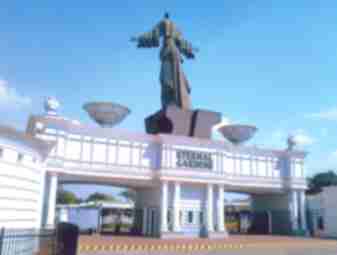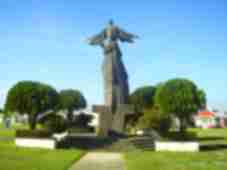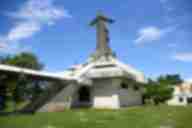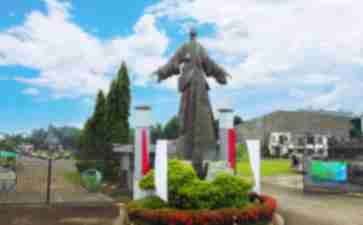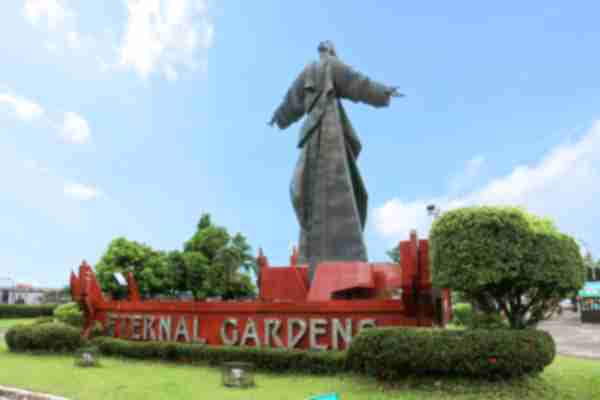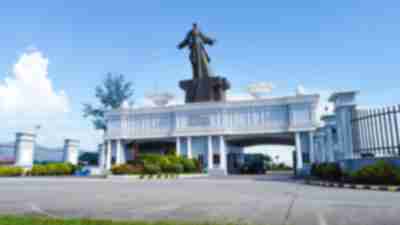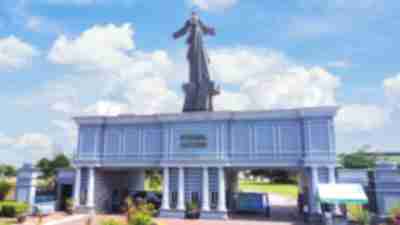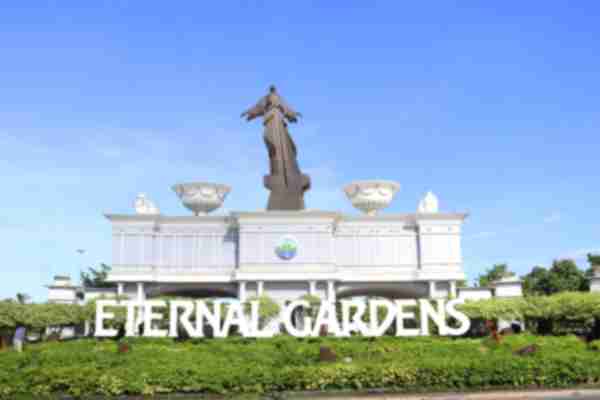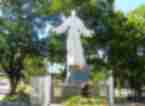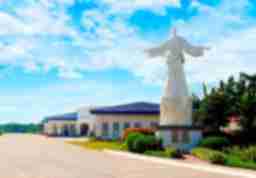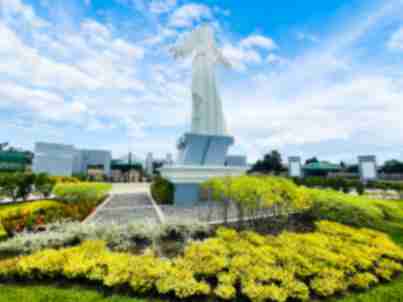The Transfiguration of Jesus Christ
An Enduring Presence
In 1979, a new work of art rose at the entrance of the North Luzon Expressway: a sculpture that would become the symbol of modernity and innovation in the country’s memorial industry nearly four decades later.

Amb. Cabangon Chua with National Artist Napoleon Abueva
The Transfiguration of Jesus Christ has become a popular landmark, not only in Baesa, Caloocan City, where it was first erected, but also in the key cities that host the Eternal Gardens parks it was built for.
National Artist for Sculpture Dean Napoleon V. Abueva masterfully designed the imposing figure of Christ looking up to the heavens with His arms outstretched. It stands 33 feet tall, symbolic of the years the Son of Man remained on earth, and rests on a 12-foot pedestal, representing the 12 apostles.
Beyond the symbolism in its dimensions, the Transfiguration represents our faith in God and eternal life, expressing humanity's highest inspiration in the search for enlightenment.
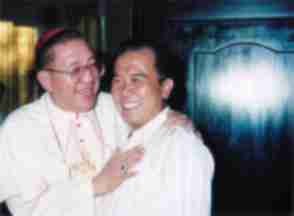
Ambassador Cabangon Chua with Cardinal Jaime Sin
When National Artist Napoleon Abueva came up with an initial model of the Christ figure for Eternal Gardens, there was some argument about whether the image represented the Resurrection or the Ascension. The matter was finally settled when founder Antonio L. Cabangon Chua visited his dear friend, then-Manila Archbishop Jaime L. Cardinal Sin, who stated that the image must be of the Transfiguration of Christ.
Today, 12 statues of the Transfiguration of Christ stand in Eternal Gardens parks in key cities across the country, with another soon to be unveiled in its newest park in Brgy. Pacol, Naga City. In each of these cities, these magnificent art pieces bring inspiration to the residents and become a constant reminder of Eternal Gardens’ commitment to serve.
